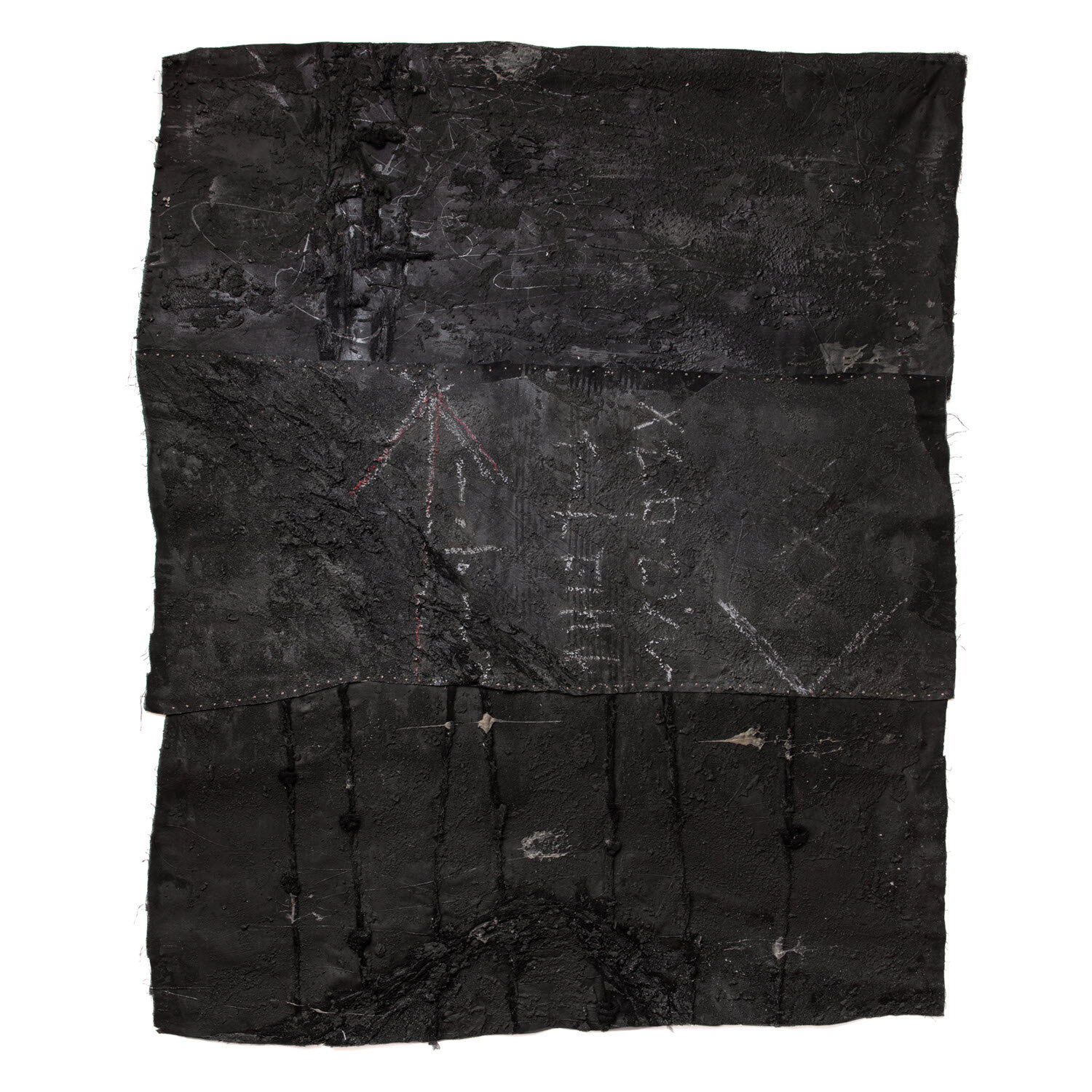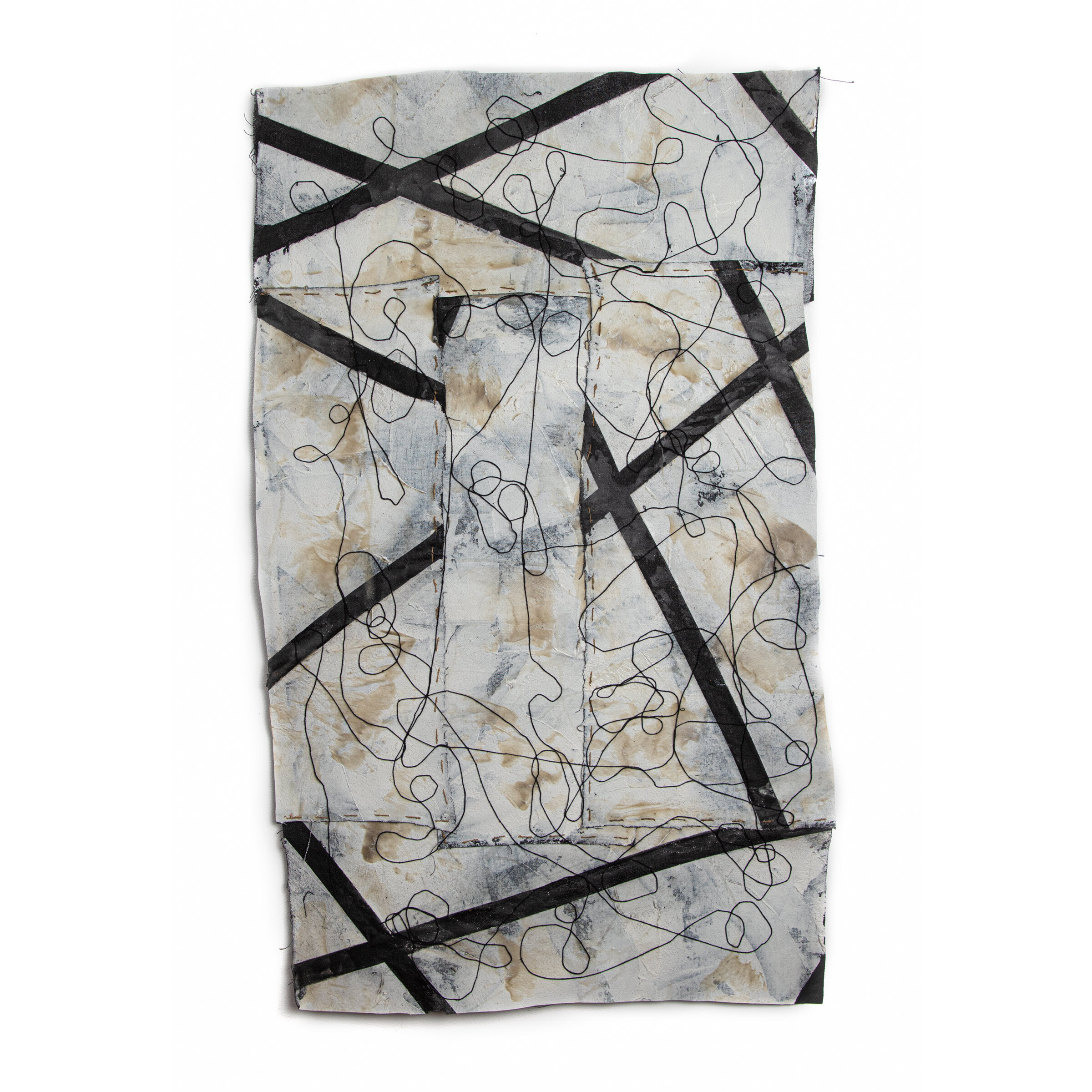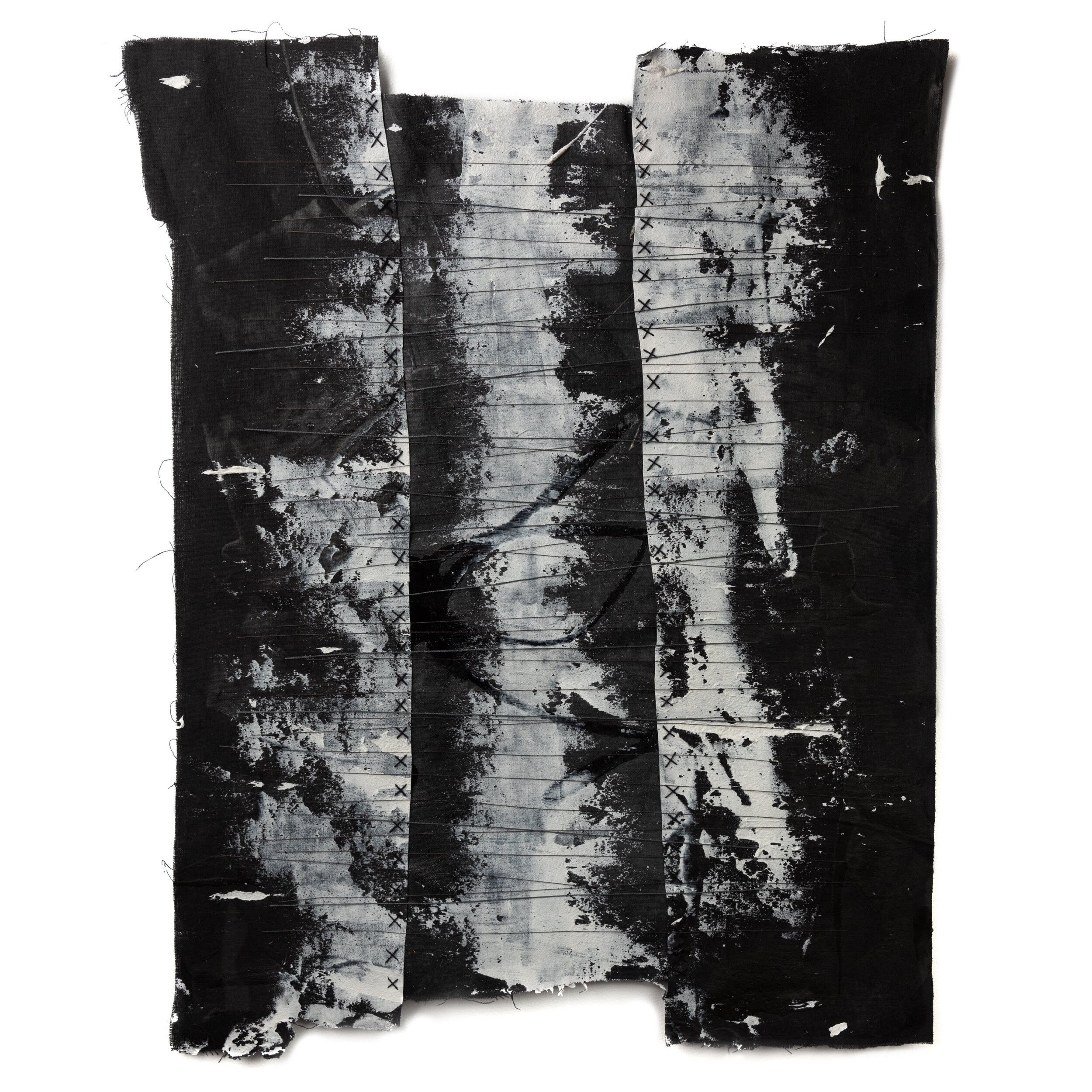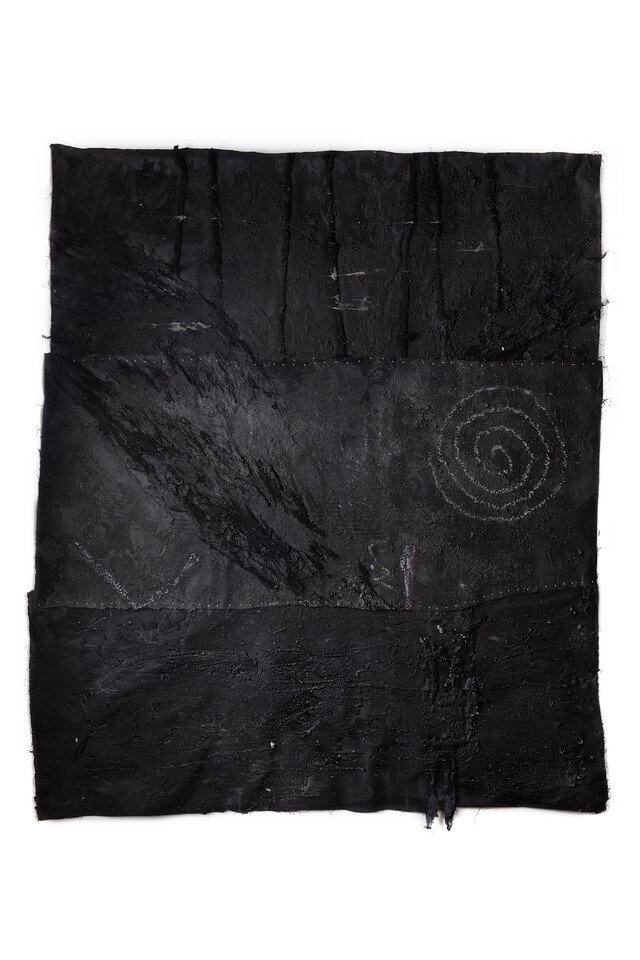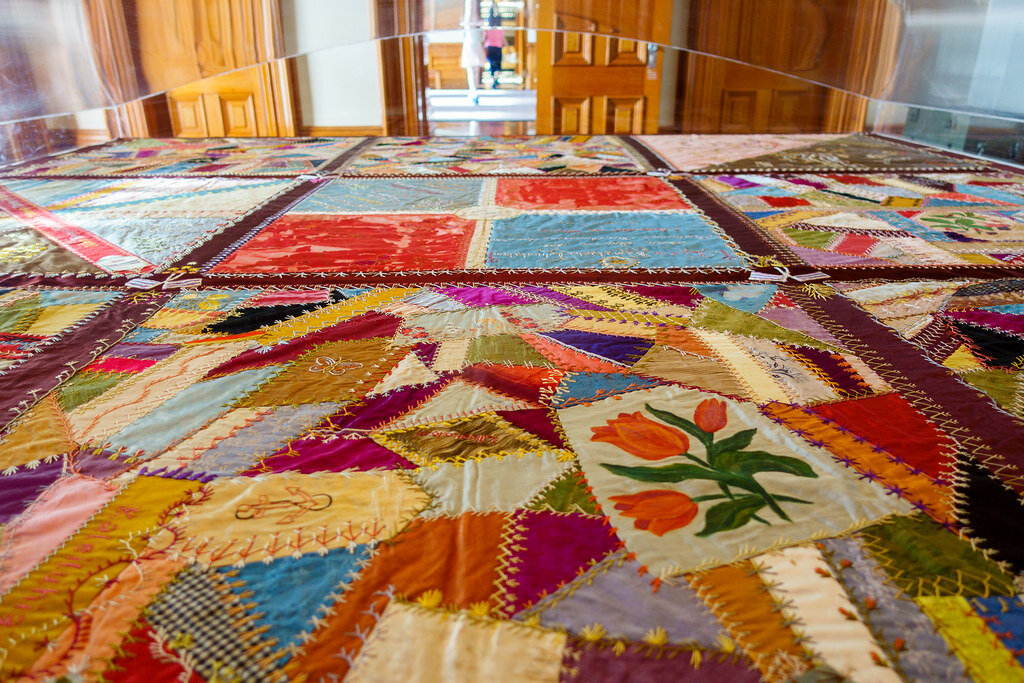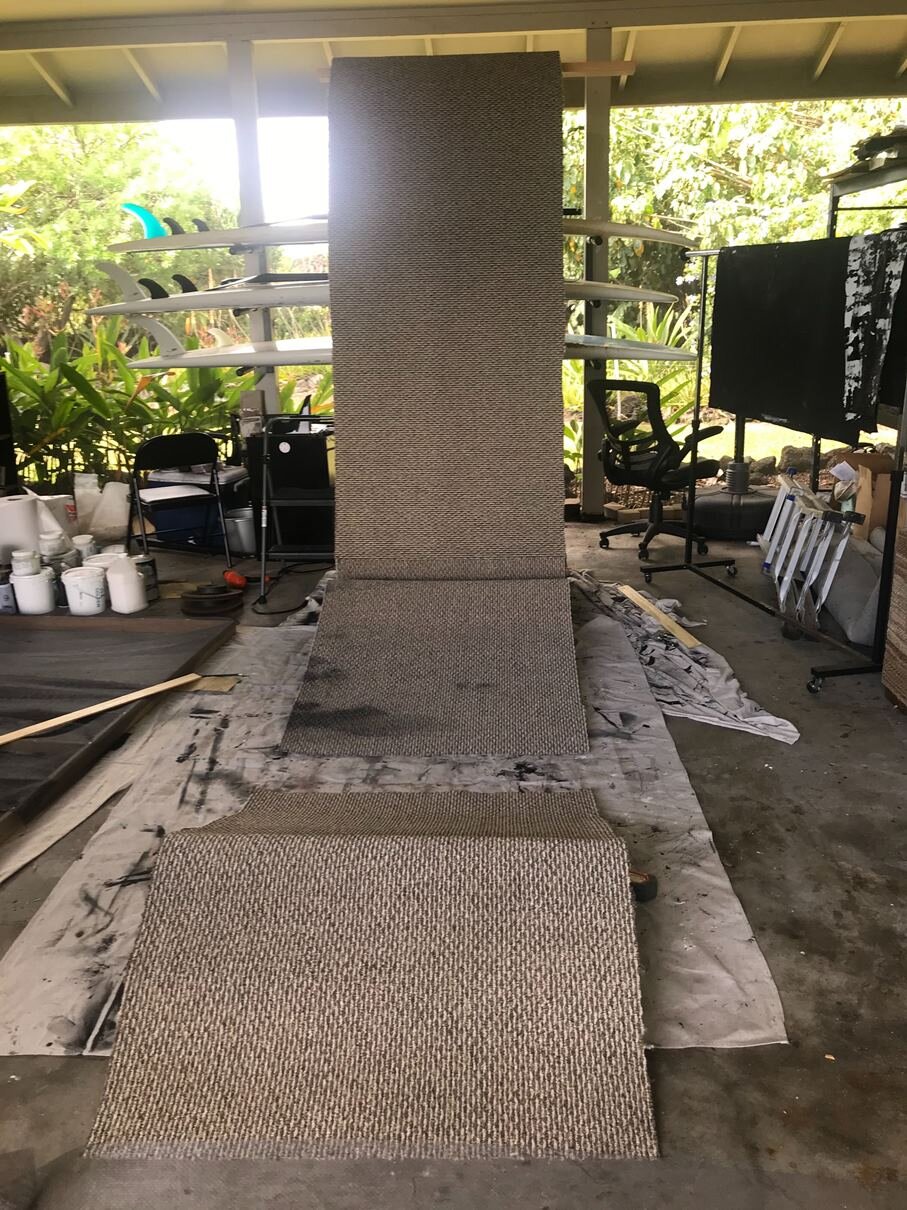Beginnings
On March 5, Hawaii’s first Emergency Proclamation about COVID was issued. Things happened pretty quickly after that. Travel bans. Shelter in place orders. Beach and business closures. Quarantines and lockdowns.
I’d been working on some pretty exciting things at the time.
Among other things, I was about to have my first solo show in California, opening in April 2020. I was getting ready for a group show at Art Basel Ping Pong in Switzerland in June 2020.
Spoiler alert: these events did not happen.
This was a time of unknowns, fears, rumors, illnesses, deaths, tragedies.
Cancelled art shows? The least of anyone’s worries.
But.
I found myself both wanting to make art, and a little unsure about what, if anything, I was making art for, if not myself. I basically went off the grid… or at least off the stretcher bars.
While locked down at my house/studio, I started making a series of abstract fragments.
They were 42” wide (the width of the Osnaburg fabric that I use as my canvas) and varied in height from 4” to 14”.
Each was different, incorporating motifs both familiar (to those who know my work) and new.
Cryptographic chalk marks. Lava-like textures of paint and sand. Meandering paths of string and twine. Alien markings.
What were these strips, these fragments?
I kept making them. The shapes were unwieldy, the edges irregular.
Of what use could they possibly be? I wasn’t sure.
I kept making them. I added mask-like elements, similar to those I’d made for a volunteer project in the early days of COVID.
By June, if I put all the strips together, they were around 15 feet in length.
A name started buzzing around in my head: Plague Journal.
Documentation of my time in the time of COVID.
something is coming together
Around that time, curator Andi Campognone started putting together a group exhibition. She was looking for LARGE work that would demonstrate that contemporary art is alive and kicking in Hawaii (if underground compared to tourist-oriented giclees). She saw this piece and selected it for the show. It was time to assemble the fragments into a cohesive whole.
I experimented with different configurations but selected to go with a gradient that progresses from lightest to darkest, symbolic of the emotional and psychological journey of this period.
But how to assemble them? Recently I’d been experimenting with constructing canvasses from smaller pieces, sewing the pieces to each other. A type of collage.
But this piece would be bigger than anything I’d ever done before. It needed stability and strength. So I decided to attach all of the components on to backing fabric.
I prepared 20 feet of backing fabric, divided into more easily transportable sections. I applied gesso and paint to strengthen and seal it, and added code, text, patterns and textures to it (along with the fragments).
I was thinking about Robert Rauschenberg’s 1/4 Mile.
Documenting a personal journey, one section at a time.
I was thinking about Queen Liliuokalani’s Quilt, made in 1895 while imprisoned in her own palace after being forced to surrender her throne.
Memorializing a present uncertain moment with deeply personal and layered textile art.
I was thinking about The Riddle of the Sphinx by Mike Kelley.
Storytelling through monumental textiles.
I was thinking about lukasa.
Storytelling through physical materials such as beads.
And of course I was thinking about COVID. After a summer in which Big Island cases had dropped to almost nothing, inter-island travel had opened back up again and COVID was back with a vengeance. It was becoming clear that this journey was far from over.
THE PERSONAL VS THE COLLECTIVE
Andi challenged me to come up with an interesting way of presenting this work. “Don’t just hang it on the wall,” she said.
I came across this graph of the COVID case curve in Hawaii.
I decided to build a structure that brought this shape into tangible reality, at a scale that was larger than human-sized.
Monumental.
Every day I tracked the new case data, added it to my spreadsheet. I used a 7-day rolling average and used the 6 month period that started with the first COVID proclamation. The numbers kept going up and up. My planned structure was getting taller and taller, the curve steeper and steeper.
I built models out of foamcore, measured and remeasured, refined and re-refined my plan.
At last it was time to build the real thing. I designed the structure so it could be broken down to fit into my car for transportation to the gallery. Along the way, problems presented themselves. What would support the fabric on the platform? Slats weren’t enough. I eventually decided on a roll of carpet.
In talking to my friend and fellow Hawaii artist Bailey Ferguson, I realized that the piece had outgrown its original name.
It was no longer just a “Plague Journal”—something personal and private. It had become epic in nature.
It was now “Plague Manifesto.”
FINISHING TOUCHES
I have an insatiable appetite for the archeological, the buried, the partially excavated. And particularly this moment, that feels instantly and always of historical note, where time is collapsing in on itself, mirrored and refracted, jumbling past, present and future in a dizzying kaleidoscope, running at different speeds… layers were essential.
So I applied layers and textures to the piece: sand and paint, handmade clay and fabric beads, petrified lumps of string and burlap, all assembled together in a monumental collage.
One of the last parts I added was 75 red elements—clay, fabric, bits of wool—one for every life lost to COVID in Hawaii between March 5 and September 2.
The final piece was everything I’d hoped for.
Somber and substantial. A stark visualization of the personal and collective experiences of this pandemic. Data and psychology blended together in one cohesive whole. A foreboding landscape of dark imaginings, lost paths, chaos, magic, prayer and so much more.
I installed it at the Kahilu Gallery in Waimea on September 18. It is 8 feet tall and 12 feet long. The textile artwork is 20 feet long.
I see it as a way to dimensionalize and memorialize some of what we have been through together as a community.












